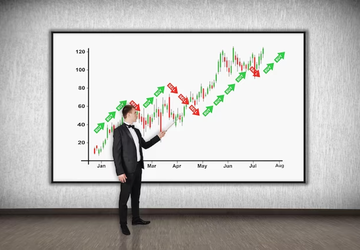Understanding Trading Leverage: Navigating the Complexities
In the dynamic world of stock trading, leveraging stands as a powerful yet intricate tool. It involves using borrowed capital for investment, aiming to amplify potential returns. However, the timing leverage in stocks is crucial; it requires a deep understanding of market trends, risk tolerance, and strategic foresight.
Timing Leverage in Stocks: Identifying the Right Moments
The critical question of when to use stock leverage hinges on multiple factors. Market stability, economic indicators, and individual investment goals play pivotal roles. Typically, leveraging is more suited to periods of market predictability, where trends can be forecasted with higher accuracy. Conversely, volatile markets pose significant risks, making leveraging a high-stakes endeavour.
Strategies for Using Stock Leverage Effectively
● Risk Assessment: Prior to employing leverage, a thorough risk analysis is essential. Understanding trading leverage means recognising the possibility of amplified losses as much as gains.
● Market Analysis: Keeping a close eye on market conditions, including sector-specific trends and broader economic indicators, is vital. Timing leverage in stocks often involves seizing opportunities in growing sectors or during market upturns.
● Leverage Ratios: Deciding on the appropriate leverage ratio is a balancing act between potential return and risk exposure. This ratio should align with one's risk appetite and investment strategy.
Understanding Trading Leverage: Risks and Rewards

While leveraging can enhance profits in favourable market conditions, it also amplifies losses during downturns. This dual nature necessitates a comprehensive understanding of leveraging mechanics and its implications on one's portfolio. Investors should approach leveraging with caution, ensuring they have a solid exit strategy to mitigate potential losses.
When to Use Stock Leverage: A Calculated Decision
Conclusively, leveraging in stock trading should never be a spur-of-the-moment decision. It demands meticulous planning, continuous market monitoring, and an unyielding commitment to risk management. For those who master its complexities, leveraging can be a formidable tool in achieving significant financial gains.
Mastering the Art of Timing Leverage in Stocks
Timing leverage in stocks is an intricate art, demanding a nuanced understanding of market rhythms and personal financial goals. It involves strategically deploying borrowed capital to amplify potential investment returns, a tactic that can substantially enhance an investor's position in the stock market. The challenge lies in identifying the opportune moments for leveraging, which hinges on a multitude of market factors and individual risk appetite.
Key Considerations for When to Use Stock Leverage
● Market Conditions: The state of the market plays a pivotal role in deciding when to use stock leverage. Periods of high volatility can offer lucrative opportunities for leveraging, but they also come with increased risk. It's crucial to analyse market trends, such as bull and bear cycles, to make informed decisions about leveraging.
● Economic Indicators and Forecasts: Understanding trading leverage requires close attention to economic indicators and forecasts. These can provide critical insights into future market movements, helping traders to time their leveraging decisions more effectively.
● Personal Financial Situation: An investor's financial health is a significant factor in determining when to use stock leverage. It's essential to assess one's financial stability, investment goals, and risk tolerance before deciding to leverage, as it can both amplify gains and magnify losses.
Strategic Application of Leverage in Different Market Scenarios
Understanding trading leverage means recognising that different market conditions call for different leveraging strategies. For instance, in a bullish market, leveraging can be a way to capitalise on rising stock prices. Conversely, in a bearish market, caution should be exercised, and leveraging might be reduced to mitigate potential losses.
Balancing Risks and Rewards in Leveraging
While leveraging can offer higher returns, it's important to be aware of the risks involved. This includes the potential for margin calls, where investors might need to provide additional funds if the market moves against their position. Therefore, a balanced approach to leveraging, considering both the potential upsides and the inherent risks, is essential.
Advanced Techniques for Timing Leverage in Stocks

Investors looking to refine their approach to timing leverage in stocks can explore advanced techniques that delve deeper into market analysis and risk management. This involves an astute assessment of market liquidity, investor sentiment, and technical indicators that signal optimal entry and exit points for leveraging positions. Such a sophisticated approach to when to use stock leverage requires both experience and a solid grounding in financial analysis.
The Role of Technical Analysis in Leveraging
Technical analysis offers valuable tools for understanding trading leverage. By studying chart patterns, trend lines, and technical indicators like moving averages and RSI (Relative Strength Index), investors can identify potential market turning points. This information is pivotal in deciding when to apply leverage in stock trading.
Leveraging in Sector-Specific Investments
When considering timing leverage in stocks, focusing on specific sectors can be a strategic approach. Investors may choose to leverage in sectors showing strong growth potential or resilience in economic downturns. This sector-specific approach requires thorough research and an understanding of sectoral dynamics, aiding in making informed leveraging decisions.
Risk Management in Leveraged Stock Trading
Effective risk management is vital when employing leverage in stock trading. This includes setting stop-loss orders to limit potential losses, regularly monitoring leveraged positions, and being ready to adjust strategies in response to market changes. The key is to balance the pursuit of high returns with the imperative of safeguarding capital.
Continuous Learning and Adaptation
The landscape of stock trading, especially when using stock leverage, is ever-evolving. Continuous learning and adaptation are crucial for investors. Staying informed about market developments, regulatory changes, and new financial instruments can provide a competitive edge in leveraging strategies.
Conclusion: Navigating Leverage with Prudence and Insight
In conclusion, the decision to employ timing leverage in stocks should be made with careful consideration of market conditions, economic indicators, and one's financial readiness. Understanding trading leverage is not just about recognising opportunities; it's about responsibly managing risks to achieve long-term investment success. By judiciously applying leverage in line with one's investment strategy, traders can make the most of market opportunities while safeguarding their financial well-being.





